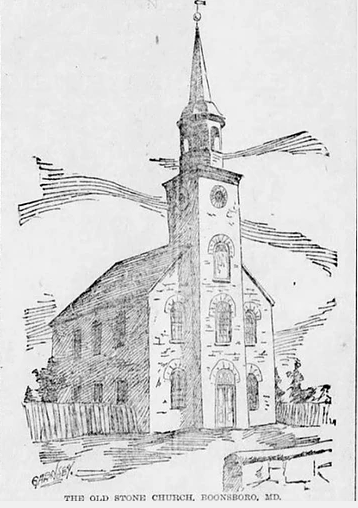“Tragedy on the Potomac"- A Peace Time Catastrophe for Hampton’s Independent Battery
- Richard Condon
- Sep 19, 2019
- 2 min read
Updated: Oct 16, 2019

In a letter home to his sister in Pittsburgh, Sergeant John C. Shaler, Hampton’s Independent Battery F, detailed the actions of his unit during the Gettysburg campaign from June to July of 1863. Included in his account was a brief description of a devastating incident which occurred on July 10, in the outskirts of Boonsboro, Maryland:
“This morning was dark and lowering, with an occasional dash of sunshine, reminding one of the flashing eyes of some demon in joyful anticipation of the fearful scenes which were to transpire today. This scene was the melancholy accident caused by an accidental discharge of one of the pieces...”
The result of this “accidental discharge” was the death, and the severe wounding of two of Shaler’s comrades- Charles Rowan Bright and Conrad Christian Arensberg. Bright died shortly after arriving at a nearby hospital, and was buried close by the site of the accident, with a “cracker box tombstone” marking his temporary resting place. He was later moved home to his family’s cemetery in Oakmont, Pennsylvania. Years later, G.A.R. Post No. 360 would be named in his honor..
In an 1894 article, the Pittsburgh Press chronicled the events of that dreadful day, using the recollections of veterans belonging to Hampton’s Battery:
“It was a scorching day in July, and the sun poured down... the men were lying around in all directions under every available piece of shade... every shelter tent was occupied, few staying under the blazing sun except those on actual duty. Among these exceptions was a certain corporal... He had in his hand a couple of friction primers, tossing around and playing with them. Finally he said: 'Watch me wake those fellows under the caissons.' He went to where the battery was parked, placed the friction primer in the vent of of the loaded gun, not knowing or not remembering that it was so, and pulled the lanyard. He certainly did wake up all the sleepers and sent one, Charles R. Bright, to his eternal rest, while another, C.C. Arensberg, of the battery, was riddled with eight case shots, carried to the old stone church... and still lives in Pittsburg, a shattered remnant of humanity... Had the gun not been depressed the consequences of that idiotic shot would have been horrible to contemplate. As it was, the case shot ricocheted, and to this comrade Arensberg owes his life..."




Conrad Christian Arensberg, was indeed a lucky man. Once taken to the stone church hospital in Boonsboro, Arensberg was seen by surgeons who thought the best course of action would be to amputate both of his legs. Fortunately for Conrad, his brother Lewis, another member of the battery, pleaded that his legs remain intact.
Arensberg eventually recovered from his physical wounds and, upon discharge, returned to his family's home in Lawrenceville, just a few blocks away from the notable Allegheny Arsenal. In fact, Arensberg would achieve great success in the post-war period. The wounded veteran became a heavy-hitter in Pittsburgh's thriving iron industry, as well as an active member of the Grand Army of the Republic, Union Veteran Legion, and board of Allegheny County's Soldiers and Sailors Memorial Hall.

In the early 20th century, Arsensberg settled on a large estate in Oakmont, just a few miles up the Allegheny River from Pittsburgh.


Comments